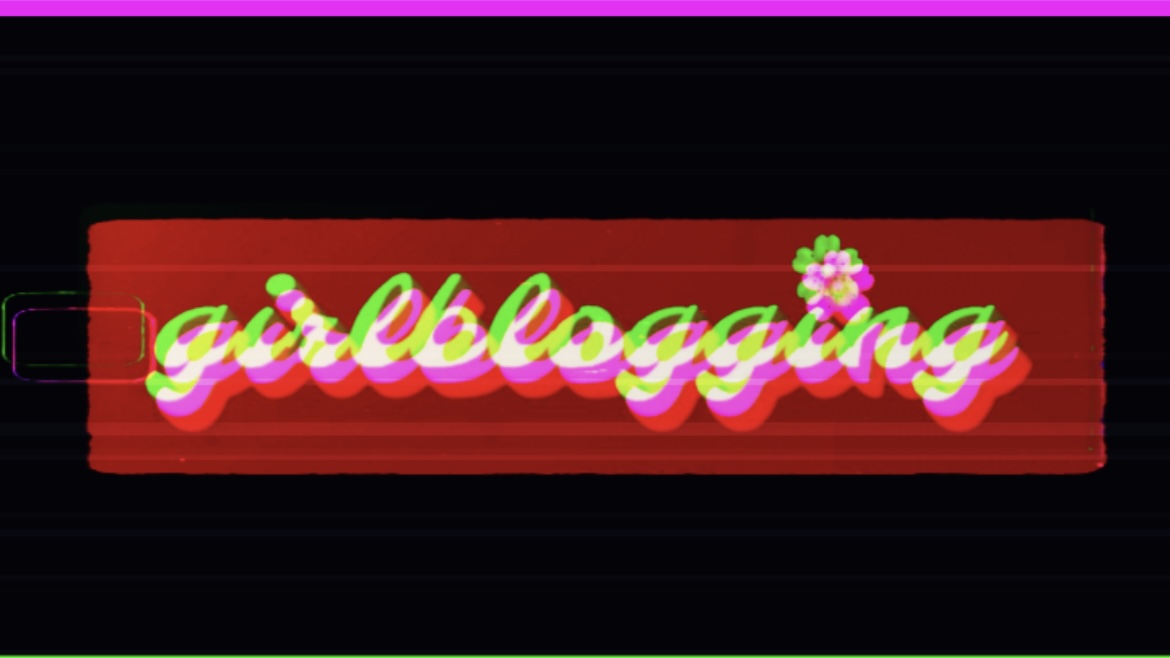 Back to selection
Back to selection
Girlblogging: For Girls, By Girls (Girls on Film)

Girlblogging is the online expression of a certain kind of girlhood: a condition not strictly defined by youth or gender, but—per the French theory collective Tiqqun in Preliminary Materials for a Theory of the Young-Girl—the quality of being “the model citizen as redefined by consumer society.” The lace and ribbons are just bells and whistles. At its core, girlhood is the aesthetic of the unequal power-relation.
The Young-Girl who constructs reactions and critiques, the girlblogger, manages to be both the consummate consumer and the consummate consumer good. Though she is wounded by them, she derives a certain pleasure from the material conditions that trap and commodify her. She exists to be looked upon, to look back at the world—particularly when it mirrors her own experience—with a covetous eye. She is made valuable and victimized by capital; it is the mechanism of her marginalization and the medium she works in on the fringes.
The practice of girlblogging is one of writing from these margins, a fundamentally filmic exercise in which visuals are at least as important as what’s actually said: aestheticized cultural criticism in posts exchanged—liked, reblogged—between online friends like trading cards. Girlblogging is memetic; it encourages engagement, as girls love to curate collections of beautiful objects, digitally and physically; it travels like wildfire.
Girlblogging constitutes a central axis of fandom (see: Lana del Rey, Taylor Swift, the institution of K-pop at large). In the 2010s, Tumblr was its primary vehicle. Movies, shows, music videos were reproduced in miniature, in moodboards and highlight reels: entire characters encapsulated in gifsets and screencaps, their arcs condensed into appearances, dialogue plastered across the moment like an auto-framing device. Under the image, the girlblogger provided her own commentary. Her favorite subject? Girls—Young-Girls—on film.
The Tumblr feed became a kind of media archive, a museum dedicated to the poor image—which, as Hito Steyerl writes, “embodies the afterlife of many former masterpieces of cinema and video art… expelled from the sheltered paradise that cinema seems to have once been.”
Girlbloggers have expanded their reach. Now poor images proliferate on Twitter, on TikTok, on a thousand splinter sites and forums where captioned film stills hang like paintings.
In a digital landscape rich with information, the poor image thrives. So does the trope, the stock character, the label—each of which lies downstream of full personhood and is therefore smaller, more digestible, easier to spread and understand. For optimal consumption, both media and identity must be spherified, necessarily degraded. In the face of short-form content—its unassailable primacy—even our trailers have trailers.
Images are immediate, and immediately gratifying: they demand attention, but never too much. Back when I was on Tumblr, I hadn’t watched Skins or Buffalo 66 or Perks of Being a Wallflower, but I knew them in concept, by representative flashes. Navigating the platform was like scrolling through a mosaic, a fresco—like going through your friends’ ephemera, playing dress-up—imagining the identities you could purchase, the images you could inhabit.
This was how I learned how to be a girl: in images, shapes to fill. There were so many polarities. You could be a nerd or a cheerleader, the mean girl or the girl next door, femme fatale or doe-eyed ingenue, Material Girl or cool girl, Jackie or Marilyn, Veronica or Betty.
It was a simpler time. We speak with more nuance now. You can be a coquette or a clean girl or a femcel, a bimbo or a doll or god forbid, a pick-me—a sigma female, a gamer girl, pro-ana, delulu—suffice it to say the pool of available identities is deeper, though you drown in it all the same.
In the words of cultural critic Rayne Fisher-Quann:
one girl on your tiktok feed might be a self-described joan didion/eve babitz/marlboro reds/straight-cut levis/fleabag girl (this means she has depression). another will call herself a babydoll dress/sylvia plath/red scare/miu miu/lana del rey girl (eating disorder), or a green juice/claw clip/emma chamberlain/yoga mat/podcast girl (different eating disorder). the aesthetics of consumption have, in turn, become a conduit to make the self more easily consumable: your existence as a Type of Girl has almost nothing to do with whether you actually read joan didion or wear miu miu, and everything to do with whether you want to be seen as the type of person who would.
The Young-Girl is a walking advertisement. The Young-Girl internalizes images, then reproduces them; to be seen in the way she desires, she acts out what she sees.
Girlblogging is coming into the light, crossing the increasingly permeable membrane between our online and offline worlds. It has emerged from the sordid margins of the internet, towing along the experiences of girlhood it curates and distributes—the agonies of being watched, consumed; the psychological warfare; the power you derive from constantly polishing your surfaces, the parts of you that face the world, and the isolation you suffer from living behind them; the naked desperation; the twin, warring impulses towards beauty and horror. I’m not like other girls—that cri de coeur for individuality, self-differentiation—has evolved into an overwhelming desire for visibility, taxonomy, self-identification—Wow… she is LITERALLY me.
The images girlbloggers present are incomplete and limiting, but they are also true. Filmmakers have known this forever: it is easy—and freeing—to project yourself onto a picture, or to put one on.
She is literally me. Maybe I became her. The thing in the image becomes all.
Read other posts in this series:
